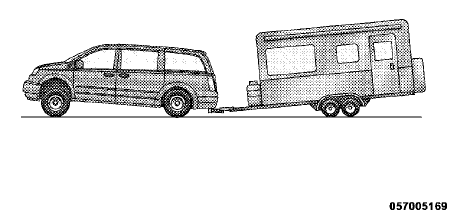Weight-Distributing Hitch
A weight-distributing system works by applying leverage through spring (load) bars. They are typically used for heavier loads to distribute trailer tongue weight to the tow vehicle’s front axle and the trailer’s axle(s). When used in accordance with the manufacturer’s directions, it provides for a more level ride, offering more consistent steering and brake control thereby enhancing towing safety. The addition of a friction/hydraulic sway control also dampens sway caused by traffic and crosswinds and contributes positively to tow vehicle and trailer stability.
Trailer sway control and a weight distributing (load equalizing) hitch are recommended for heavier tongue weights (TW), and may be required depending on vehicle and trailer configuration/loading to comply with gross axle weight rating (GAWR) requirements.
WARNING!
• An improperly adjusted weight-distributing hitch
system may reduce handling, stability, braking
performance, and could result in a collision.
• Weight-distributing hitch systems may not be
compatible with surge brake couplers. Consult
with an authorized hitch and trailer manufacturer
or a reputable authorized Recreational Vehicle
dealer for additional information.

Without Weight-Distributing Hitch (Incorrect)

With Weight-Distributing Hitch (Correct)

Improper Adjustment of Weight-Distributing Hitch (Incorrect)
See also:
Recreational Towing – All Models
Recreational towing is allowed ONLY if the front wheels
are OFF the ground. This may be accomplished using a
tow dolly or vehicle trailer. If using a tow dolly, follow
this procedure:
1. Proper ...
Notes On Playing MP3 Files
The radio can play MP3 files; however, acceptable MP3 file
recording media and formats are limited. When writing
MP3 files, pay attention to the following restrictions. ...
Overview
Chrysler introduces the new Chrysler 200 mid-size sedan. Offering consumers
exceptional craftsmanship inside and out, a refined and spirited driving
experience, innovative technology, an abundance ...
